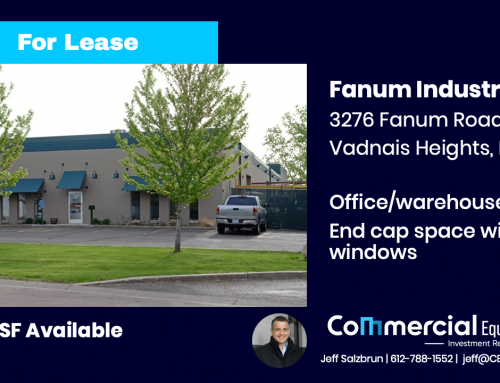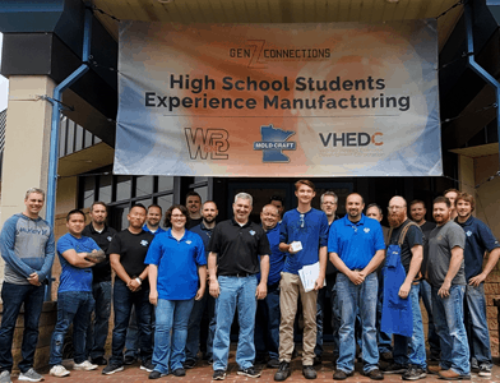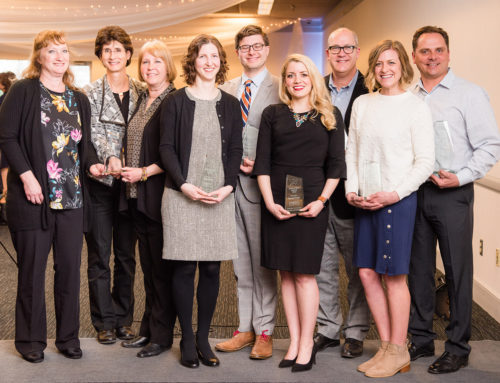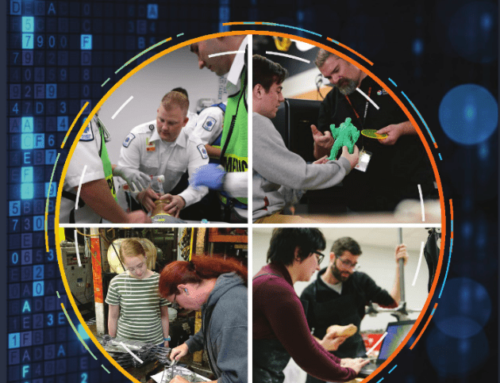Many Minnesota employers – especially those in the manufacturing sector – have been struggling for years to find qualified job candidates. In 2015, the VHEDC Workforce Action Committee was launched to partner with local educational institutions and businesses to fill “the skills gap.”
Century College, the first college in the region to install and implement a Digital Fab Lab and incorporate a Massachusetts Institute of Technology initiative across its curriculum in science, technology, engineering and math (STEM), now has a new Associate of Applied Science (AAS) degree program: Additive and Digital Manufacturing (ADM). Nowadays, companies that digitally manufacture for themselves or with other industries that employ them – such as Innovize in Vadnais Heights – require skilled workers with a focus on higher-level computer design, simulation and automation. Three ADM students recently finished full-time summer engineering internships with Innovize. The internships allowed them to put their classroom knowledge “to the test” and refine their professional goals.
And, according to John Sopp, Innovize’s Vice President of Operations, “The students from the Century College Fab Lab made an incredible impact at Innovize. Not only did they make major contributions with building some of our most challenging medical products, they also collectively engineered productivity improvements that will save Innovize over $50,000 per year.”
Zach Gunelson
Zach, a White Bear Lake native, plans to receive his AAS degree in 2018, then transfer to a four-year college to pursue a career in bioprinting. He says, “In the next five to 10 years, I’d like to manufacture printers that will be printing organic material. It’s an area of additive manufacturing that fascinates me.
“However, it was only a couple years ago when I didn’t know what I wanted to do professionally. My journey began when I bought a remote helicopter at Radio Shack and subsequently became very interested in racing drones. As I became more interested in them, I wanted to build my own, which I have. Then, I wanted to go to school to build other machines, and I found out about Century’s Additive and Digital Manufacturing program; I now own a 3-D printer.
“Additionally, my internship with Innovize – my first internship by the way – helped me hone in on my professional goals. At Innovize, I worked with a medical team from the Twin Cities on a product used to control cancellous bone bleeding. My role was to help create a more efficient process, which meant making fixtures for the electrospinner, or finding a more efficient way of cutting blood clotting material into the size it needs to be.
“The course work at Century has prepared me for this internship. In a lot of my classes, I’ve had to use critical thinking as well as teamwork/collaborative methods with other students to try and solve problems. At Innovize, I had to think of creative ways to solve problems individually on some projects, and other times I’ve had to work with others to try and brainstorm ideas for separate ways to solve bigger problems.”
Pao Thao
Pao, a Laos native who immigrated to St. Paul with his family in 2006, recently received his AAS from Century and will be a new student at the University of Minnesota this fall, pursuing a career in electrical engineering.
About his engineering technician role at Innovize (his first internship position), Pao says, “My position gave me a real-world view of how products are manufactured and the various steps/overall time in the process. My role was to create ideas that would reduce production times, and I did this by observing and collecting information about particular projects.
“One of my projects involved the production of a bandage patch. One of the steps in the process is “heat-sealing.” Every two hours, one person runs three sealers; for every one sealer, we sealed two pouches, thus producing about 600 pouches during that production time. However, I learned there was a delay of approximately 30 – 40 seconds, so I proposed adding another sealer because we could then produce an additional 200 pouches.
“One project typically takes about a week to complete; adding another sealer saved us a day. Saving time outweighed the cost of another sealer; this process means Innovize is helping its client save money, and patients benefit from that too.
“From my internship, I learned something about what it means to manage employees and costs, and how to grow a company. While working toward an electrical engineering degree, I’ll double-major as a computer engineer. I dream about owning my own manufacturing firm someday – one like Innovize that’s recognized as a leader in its field. When I was in high school, I debated about medicine or engineering, but after my first year at Century, I decided on engineering because of my dream. Then again, I’ve also thought about working for NASA. Time will tell.”
Michael Fisher
Michael, a native of North St. Paul, first attended Century College in 2006, to study music. In the eight years before returning to Century two years ago, he was a member of a band, produced a couple records, then had a solo career in Nashville. He says, “I specifically returned to Century to study engineering. Some of my friends are engineers; one said he wanted to make guitar pedals, and that piqued my interest in engineering.
“A little while into my internship with Innovize, I realized that one of my classes – Intro to Engineering – did a particularly great job of teaching ways to improve cost efficiency, quality and functionality; the students were required to meet some of the most common restraints in the engineering field: cost limits, size parameters and material restraints.
“Innovize creates over 40,000 medical devices. Every day was different for me; I performed a lot of laser-cutting to create in-house products, such as templates that help create greater accuracy for their clients’ products. Also, my job was specific because I was allowed to select a client that has a high volume of production. That way, I could innovate ideas, ways and processes in the assembly and production process – with the goal of increasing safety and costs during production while maintaining and/or improving the quality of products.
“Ultimately, I want to be an electrical engineer in the climate-change or biomedical device field. Tesla’s doing some amazing things with solar panel shingles, for instance. And, my internship with Innovize was inspiring because their medical device products touch so many lives. While I was laser-cutting something like 900 pieces, I realized I could be affecting that many lives.”







Leave A Comment